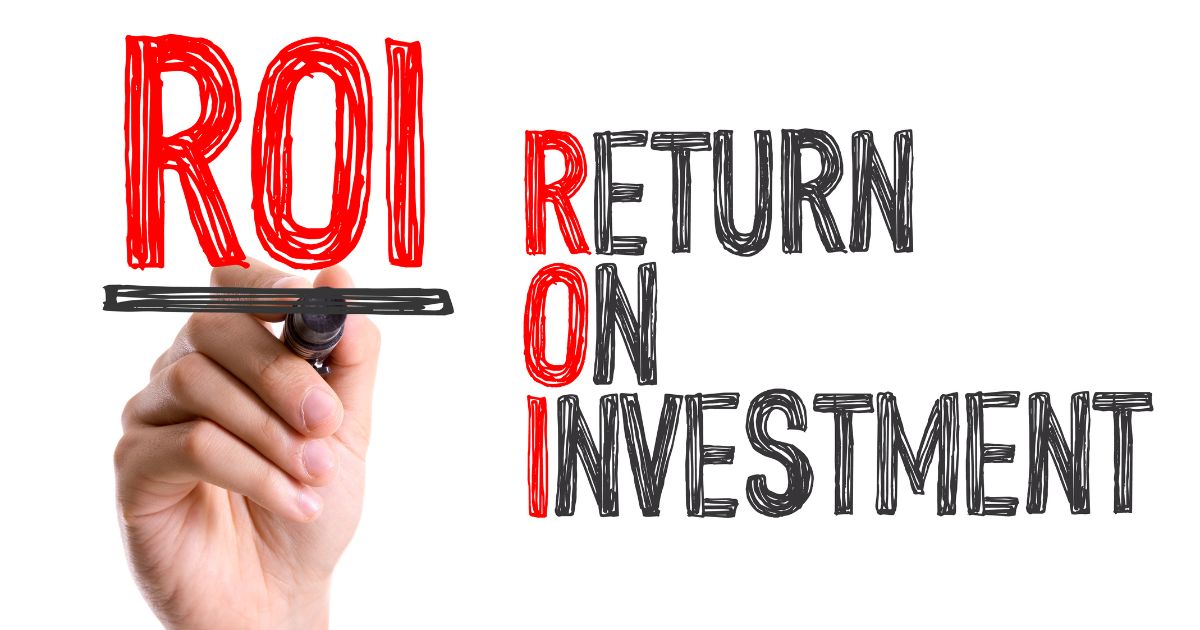In the competitive landscape of modern business, maximizing Return on Investment (ROI) is paramount for sustainable growth and profitability. Marketing, as a core component of business operations, plays a pivotal role in achieving this objective. However, navigating the dynamic realm of marketing to ensure optimal ROI can be challenging. In this post, we delve into strategies and statistical insights to improve marketing ROI, providing actionable guidance for businesses aiming to enhance their bottom line.
Understanding Marketing ROI
Marketing ROI, simply put, measures the profitability of marketing efforts relative to the costs incurred. It serves as a critical metric for assessing the effectiveness of marketing campaigns and guiding resource allocation. According to recent studies by Nielsen, an average marketing ROI across industries stands at approximately 5.3:1, meaning for every dollar spent on marketing, businesses generate $5.3 in revenue. However, this figure varies significantly based on factors such as industry, target audience, and campaign objectives.
Identifying Key Metrics
To improve marketing ROI, it is essential to identify and analyze key performance metrics. Conversion rate, customer acquisition cost (CAC), customer lifetime value (CLV), and marketing attribution are among the crucial metrics to monitor. Research by HubSpot reveals that companies with higher CLV-to-CAC ratios tend to achieve superior ROI. By focusing on enhancing customer retention and optimizing acquisition costs, businesses can drive sustainable revenue growth.
Segmentation and Personalization

Segmentation and personalization play a pivotal role in maximizing marketing ROI. By tailoring marketing messages and offers to specific customer segments, businesses can enhance relevance and engagement. Statistical data from Salesforce indicates that personalized email campaigns deliver six times higher transaction rates than generic ones. Leveraging customer data and predictive analytics enables marketers to create targeted campaigns that resonate with their audience, thereby driving conversion and ROI.
Investing in Data Analytics
In the digital age, data is an invaluable asset for marketers seeking to improve ROI. Investing in advanced analytics tools and technologies enables businesses to gain actionable insights into consumer behavior, preferences, and trends. Research by McKinsey & Company highlights that organizations utilizing data-driven marketing strategies achieve a 15% increase in ROI, on average. By harnessing the power of data analytics, marketers can optimize marketing spend, refine targeting strategies, and drive tangible business results.
Embracing Multi-Channel Marketing

With consumers engaging across multiple channels, adopting a multi-channel marketing approach is imperative for maximizing ROI. Statista reports that 73% of consumers use multiple channels during their shopping journey. By integrating various channels such as social media, email, search, and mobile, businesses can create cohesive and immersive brand experiences. Furthermore, leveraging cross-channel analytics enables marketers to attribute conversions accurately and allocate resources effectively, resulting in improved ROI.
Optimizing Content Strategy
Content marketing continues to be a cornerstone of digital marketing efforts, offering significant potential for ROI improvement. Studies by Content Marketing Institute reveal that businesses with a documented content strategy are twice as likely to report higher ROI from their content marketing initiatives. By focusing on creating high-quality, valuable content tailored to the needs and interests of their target audience, businesses can drive engagement, build brand loyalty, and ultimately increase ROI.
Testing and Experimentation
In the pursuit of enhancing marketing ROI, testing and experimentation are invaluable strategies. A/B testing, also known as split testing, allows marketers to compare different versions of marketing assets such as ad copy, landing pages, and email subject lines to determine which yields better results. Research by Optimizely indicates that companies implementing structured experimentation processes achieve a 30% improvement in ROI. By continuously testing and iterating marketing campaigns based on data-driven insights, businesses can refine their strategies and optimize ROI over time.
Conclusion
Improving marketing ROI requires a strategic and data-driven approach. By focusing on key metrics, leveraging segmentation and personalization, investing in data analytics, embracing multi-channel marketing, optimizing content strategy, and prioritizing testing and experimentation, businesses can enhance the effectiveness and efficiency of their marketing efforts. In an increasingly competitive landscape, maximizing ROI is not merely a goal but a necessity for sustainable growth and success.
FAQs
Businesses can effectively measure and track marketing ROI across various channels and campaigns by employing advanced analytics tools and methodologies. While the process may vary depending on the industry and specific goals, utilizing multi-touch attribution models, implementing robust tracking mechanisms, and leveraging data analytics platforms are common approaches. By integrating data from different sources and channels, businesses can gain insights into the impact of each marketing initiative on conversions and revenue generation.
Implementing data-driven marketing strategies often comes with challenges such as data privacy concerns, data quality issues, and the need for skilled personnel to interpret analytical insights. To overcome these challenges, businesses should invest in robust data governance frameworks to ensure data accuracy and compliance with regulations. Additionally, conducting regular audits of data sources and implementing data cleansing processes can help maintain data quality. Moreover, providing comprehensive training programs for employees on data analytics tools and methodologies can enhance their ability to derive actionable insights from data.
Yes, the article provides insights into various strategies for enhancing marketing ROI; however, it lacks concrete examples or case studies to illustrate real-world implementation and success stories. Readers may seek specific examples or case studies showcasing how businesses tailored their marketing campaigns, leveraged data analytics, or experimented with different approaches to achieve measurable results. Seeking industry-specific case studies or success stories from reputable sources can provide valuable insights and inspiration for businesses looking to emulate similar successes in their marketing endeavors.
Have a project that you’re looking to field?
Logit can help. Just fill out the form below and a Logit Group team member will be in contact with you shortly. Get a quote today.





